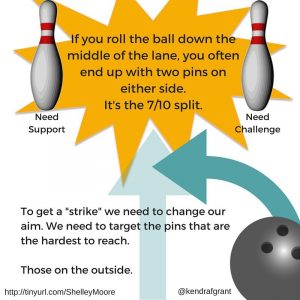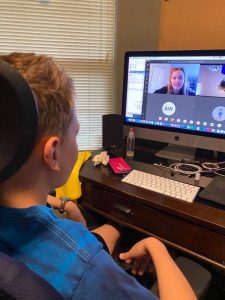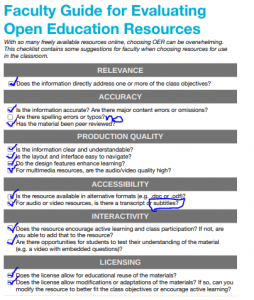How the COVID pandemic of 2020 impacted the future of Education
The year is 2040 and education has seen a massive shift in both physical and theoretical practices. No longer will you enter a school and see a teacher standing at the front of the room with their pupils sitting in rows of desks, diligently taking notes on different types of renewable resources. Instead, educators have moved towards the theoretical constructivism approach where you will see a large space, maybe it has one or two desks, there might be a rug in the middle and there may even be students in the hallways and in other classrooms or participating through video calling in! The year is 2040 and this type of new age class is still learning about renewable resources, just as in the past, however instead of taking notes, students are working with microbits, trying to recreate a solar panel, some students are working with a lego mindstorm robot, inventing a prototype that will help clean up the trash on the sides of the road. Regardless of what technology tools are being used, in 2040 we live in a world where education and technology go hand in hand, where students are seen as individuals with individual needs.
Although education has seen major shifts, educators have FINALLY realized (and it only took them till 2040, woohoo!) that to have children be successful, we (educators) must create an environment that is equitable and inclusive for all. Back in 2016, an inclusion guru by the name of Shelley Moore was starting to make waves with her ideas of equity and inclusion and used a brilliant analogy where bowling represented inclusion, or lack thereof. Shelley uses the analogy that a bowling ball is the lesson and the pins are the students. As teachers, we aim our “bowling ball” for the middle of the pin and hope that it somehow miraculously knocks down all pins. However, we know that knocking down all the pins isn’t likely, but you would normally get another chance to knock down the rest of the pins. But at the end of the day, you still might end up with a 7-10 split, with your two outlying pins representing your students who need the most support. What Shelley recommends is that we, as both bowlers and educators, need to change the way we throw the ball. Just as professional bowlers do, we need to readjust what we think we know about bowling and maybe try to knock those harder pins down first.

Inclusiveness has been one of the major shifts within the educational system and why is that you may ask? Upon examining studies, conversations with students, educator notes, we found out that there is no one-size-fits-all approach to teaching. Simply put, we educators have realized that students learn in unique ways and you may end up teaching a class with 28 different types of learners. As we were redesigning the educational system, our educational leaders grappled with the question “what would be the best way to teach children?” Our first instinct was to look at our past, see what worked (and what didn’t) and go from there. Luckily for us, we had a time in our history where almost all schools, preschool through University, we shut down for several months and we educators were forced to come up with a plan to teach children without them sitting in desks directly in front of us.
It was the year 2020 and a virus called COVID was threatening our world. By the time March 2020 rolled around, the entire world was on lock down. Schools were closed, businesses boarded up their windows shutting up shop for who knows how long and people were being let go from jobs. It was a crazy time! However, out of all the craziness that ensued, educators were left sitting at home, scratching their heads, trying to come up with ways to remotely teach their students for the remained of the year. For myself, the teaching challenges that COVID brought taught me how to be adaptable, flexible and how students thrive when given opportunities to become their own teacher.
When COVID hit in 2020, I was forced to transfer all my teaching online. However, I was fortunate enough to be able to access some supporting materials that helped me create an online learning platform. When first developing my online teaching platform, I thought of the students that I had in my class; what are their need, their wants, what are they comfortable with and do they even have technology to support online learning? These were all questions that I kept asking myself over the first week and I concluded that the first thing I needed to set up was clear communication, “communication is a foundational element of educational theory; without clear communication, learners can feel confused and discouraged” (Basic Philosophies of Distributed and Open Learning, Crosslin, M.). Through establishing video/phone conversations with each of my students, I was able to communicate what steps we, as a class, were going to take to continue to learn. As well, through reaching out to each of my students, I was able to check in with them all personally and see how they were doing and if they were even in the right headspace to learn. Upon communicating with students, I also found that a lot of them were missing the human aspect of school. To combat this issue, I turned to the resource Basic Philosophies of Distributed and Open Learning, where it discussed the framework Community of Inquiry (CoI) which “focuses on increasing threes presences to help learners construct personal meaning in learning as well as to collectively confirm mutual understandings: teaching presence, social presence, and cognitive presence.” Through using the Community of Inquiry framework, my students were able to better construct personal meaning within their learning.
In addition to learning how to remotely communicate with my students, I also had to practice flexibility. Through teaching students online, I found that some students had technical issues, some students didn’t know how to access certain materials and some students wouldn’t even attempt to communicate with their peers. I had to continue to fight my frustrations and start taking a step back. I realized that maybe I was holding my student’s hands to much and not allowing them the time to figure out their problems for themselves. Through transferring ownership of learning from myself to my students, I actually saw an increase of engagement. Sure I still had some students asking me a million questions on the first week of this transfer of learning, but as the weeks progressed, I received fewer and fewer questions. I saw that my students started asking each other questions, that they were setting up their own video chats with each other to discuss what has been working for them and what has been challenging.
As it turned out, transferring to online teaching wasn’t as painful as I thought it would be. My students showed me that they were thirsty to learn and that they didn’t really need me there to walk them through every single step. My students taught me how to be flexible, how to look at a problem from a different angle, how to see the best in a not-so-great situation. In all, the COVID crisis of 2020 was the best teaching opportunity that I could have been given, and I have been able to take what I learnt back then and apply it to my teaching today!
So, how has education changed from 2020 to 2040? Well as I previously explained, the COVID pandemic of 2020 shifted the way educators taught students. When we returned back to school, we educators took what we learnt from the pandemic and shifted the ideology of what learning should and could look like. Before 2020, the question of “how can I reach the needs of ALL of my students” consistently kept me up at night. Now, however, thanks in part to the COVID crisis, that question doesn’t bother me. I now know that I don’t need to be the center of all learning in my class, that students can teach each other. Finding equity is no longer a problem that I find myself faced with, for the way my students learn all looks slightly different. I found that equity doesn’t mean giving each child the same thing, equity is meeting the child where they are at through having conversations, equity is learning about what the child is interested in, equity is providing multiple opportunities for students to work with their peers. When you walk into my classroom, you may only see one child working at a desk, you may see some children video chatting with a NASA scientist while another child is building a skyscraper out of lego. It is 2040, a time in history where we educators still teach children, just maybe not in the ways that your grandparents would remember.



